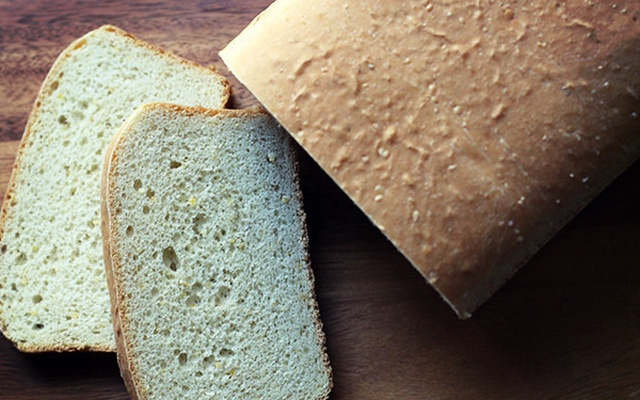Salt-rising bread (or salt-risen bread) is a dense white bread that is traditional in the Appalachian Mountains, leavened by naturally occurring wild bacteria rather than by yeast. Salt-rising bread is made from wheat flour; a starter consisting of either water or milk and corn potatoes, or wheat; and minor ingredients such as salt and sugar. Some common ways of eating salt-rising bread include a slice with sugared coffee poured over it, a grilled cheese sandwich, and the most popular preference, buttered toast.
Salt in the name is a misnomer; the bread is not leavened by salt nor does it taste salty. One explanation for the name of the bread is that the use of salt is often added to the starter to inhibit yeast growth and provide an environment more conducive for the bacteria to grow, enhancing the distinct flavors which predominate over the more typical yeast flavors. Another possible origin of the name may be that the starter was kept warm in a bed of heated salt.
Compared to a sourdough starter, salt-rising bread starter requires a shorter incubation period of 6–16 hours and a higher incubation temperature, of around 40 °C (104 °F). Salt-rising bread is denser, with a closer grain than yeast-leavened bread, which results in a flatter top. Due to the unique fermentation, this bread has a distinctive taste and odor. The pungent odor of the fermenting starter has been described as similar to "very ripe cheese".
